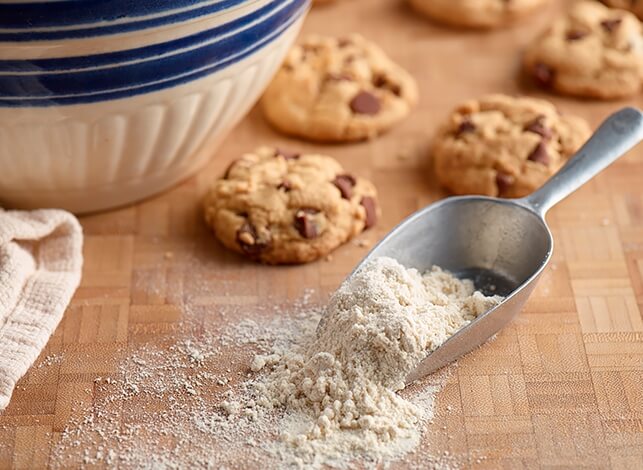All-purpose Flour Or Pastry Flour? Which One To Use For Your Baking Needs

If you are interested in baking bread every weekend or you are really obsessed with cake and pastries, then you must make sure that you have specific flours at hand. But how will you decide which one would be best for your baking needs – all-purpose flour or pastry flour? You might be wondering whether there is any big difference between these flours? Can all-purpose flour be used for baking recipes?
In baking, the ingredients are essential but flour is considered the main component. And the type of flour you use in baking will greatly impact the outcome of your baked items such as cakes, pastries, pies, or cookies.
Before you start baking, you must understand the difference between the type of flour you are using and must know how they are made. The main difference in wheat flours is the amount of protein the flour contains. The higher the percentage of protein, the greater the strength it provides.
What To Choose For Baking Needs – Cakes, Bread, And Pastries?
The choice of the flour completely depends on your baking needs. The baking aisle of the supermarkets is really exciting with a wide range of flours used for baking. You can get all-purpose flour, bread flour, cake flour, and pastry flour. Well, it is easy to understand that there is a difference between all-purpose flour and pastry/ cake flour but wondering about the difference between cake flour and pastry flour. Isn’t it?
However, there is a slight difference even in the cake and pastry flour because they serve a different purpose and have different functions.

All-Purpose Flour: All-purpose flours, also known as plain flour is commonly used for baking purposes. The protein level lies between 10 to 12 percent. All-purpose flour is made from the endosperm and this makes it more stable than other flours that are made from grinding the whole wheat seed head.
- It has less fiber and protein as compared to whole-wheat flour
- It is great for baked goods but not delicate baked items such as cookies, cakes, and pastries.
- It can be used as a substitute for various baking recipes. (Cakes and bread). But you must know that the final texture of the baked item will vary slightly.
Generally, high-protein bread flour tends to absorb more liquid which makes the dough of all-purpose flour a bit stickier. Whereas if you are using low-protein flour, it will absorb less liquid and the dough is slightly lighter.
You must know about the approximate protein content of all the common types of flour:
- Bread Flour: 14 – 16%
- All-Purpose (AP) Flour: 10 – 12%
- Pastry Flour: 9%
- Cake Flour: 7-8%
Pastry Flour
Generally, the pastry flour requires a soft and fine texture for which it is milled extremely. This texture is finer than the all-purpose flour. It is basically made with soft wheat for lower protein content. The fine texture of the pastry flour and low protein makes it best for baking pastries, pies, pie crust, and pound cake. Once properly baked, the resulting baked item is very tender and delicious. You must avoid using pastry flour for anything that demands structure, like bread doughs or pasta.
Cake Flour: Cake flour has a slight difference in the protein content as compared to pastry flour. It is bleached which helps in its ability to bake items that are fluffy and soft. It is used where there is a need for highly-risen, and tender results are expected such as spongy cakes.
While baking cakes, pastries or pies you can make use of either pastry flour or cake flour as there is not much difference between the two. It will be helpful in serving the purpose.
Bread Flour: The major difference between all-purpose flour and bread flour is the amount of protein content available in the flour. Generally, bread flour has higher protein content as compared to all-purpose flour. It is white and comes in whole-wheat varieties.
Summary: The exact amount of protein content available in different types of flours varies by brand, by region, and also by country. However, the name given to the flour is usually an indication of how it’s intended to be used. If you’re having trouble with a recipe written by someone in another country, try to figure out the protein content of the flour they’re using and then find your local equivalent. It will assist you in understanding your baking needs and will suggest you the right one. Just be wise enough to choose all-purpose or bread flour for baking items that need to be chewy and not for cakes and pastries.
 Power to The Bakers.
Power to The Bakers.